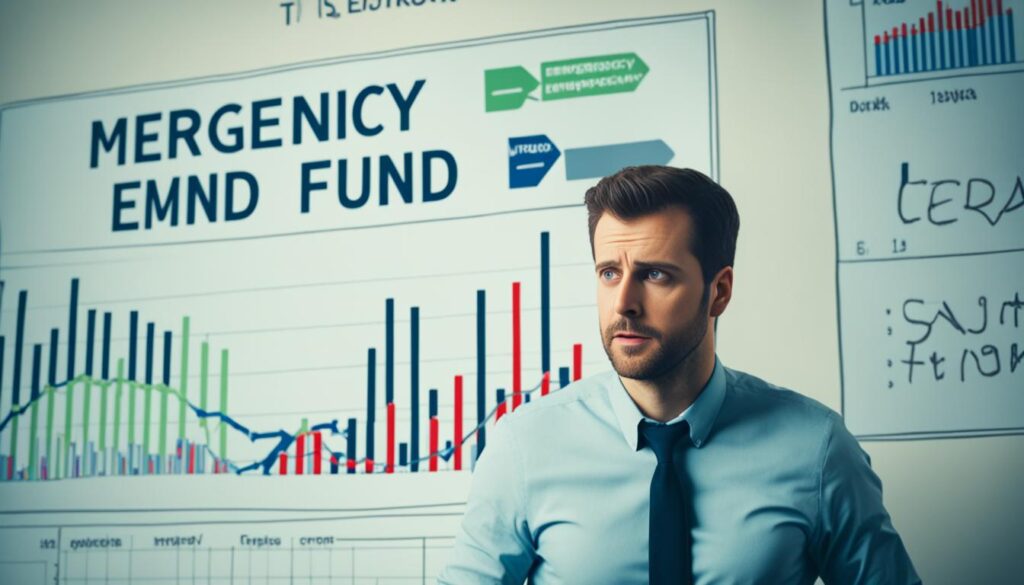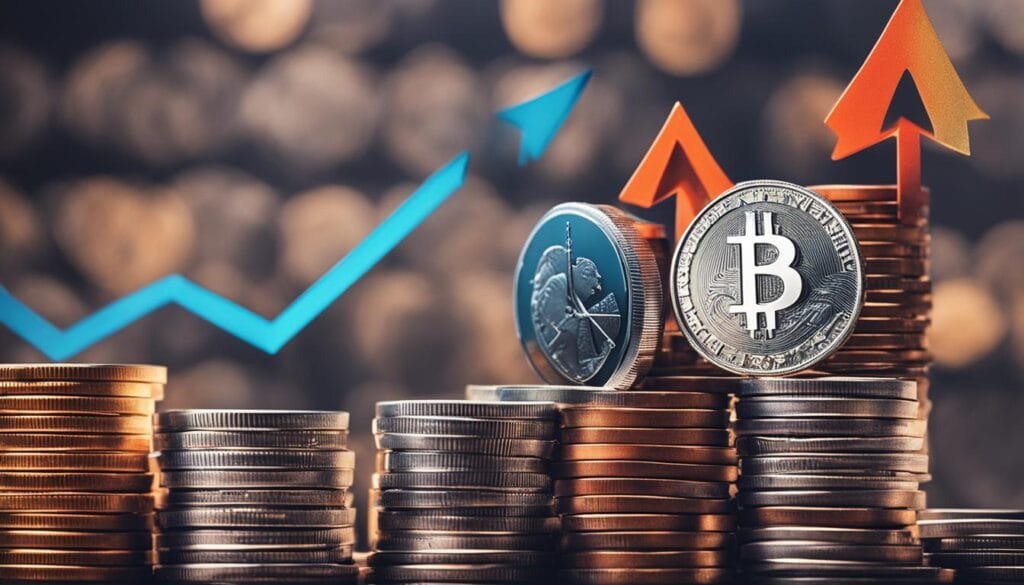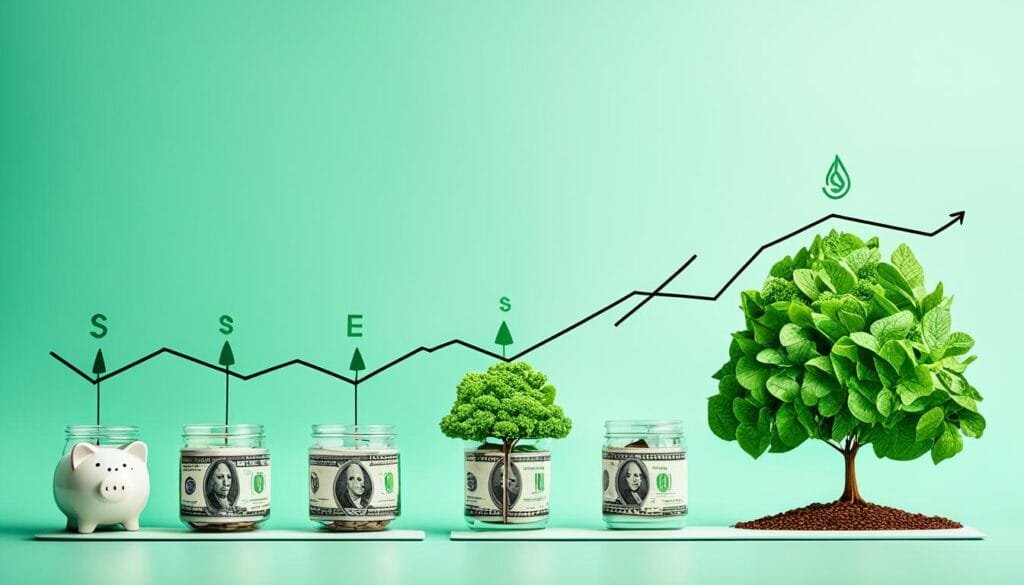Did you know that nearly 30% of Americans do not have enough savings to cover a $400 emergency expense? This startling statistic underscores the critical need for an emergency fund as a financial safety net, particularly as unexpected events can lead to severe financial strain if one isn’t adequately prepared1. On the other hand, investing in the stock market has its own allure, promising the potential for significant long-term growth2. The challenge lies in balancing these two crucial aspects of personal finance: building an emergency fund versus investing in stocks. In this article, we will explore the importance of financial planning to navigate this dilemma successfully, while also considering the essential role of emergency savings and how they stack up against potential returns from stock market investments.
Key Takeaways
- Building an emergency fund is essential for financial security.
- Aim for three to six months’ worth of non-discretionary expenses in savings.
- Investing in the stock market offers potential long-term growth.
- Finding a balance between saving and investing is crucial for financial stability.
- High-yield savings accounts can aid in growing your emergency fund.
Understanding the Importance of an Emergency Fund
An emergency fund is critical for financial stability, providing a safety net during unexpected expenses. It is essentially a savings account meant for unforeseen situations, such as healthcare costs, loss of employment, or urgent home repairs. Financial strategists suggest maintaining an emergency savings amount that covers three to six months of living expenses, allowing easy access without triggering debt34.
What is an Emergency Fund?
Emergency funds serve the essential function of mitigating financial risks. These funds should ideally be held in high-yield savings accounts, allowing for safety and easy access, while also offering competitive interest rates that help grow the fund over time4. A good starting point is to set aside at least $500, ultimately aiming to accumulate the equivalent of half a year’s expenses3.
Emergency Fund Importance for Financial Security
The emergency fund importance cannot be overstated, as it ensures ongoing financial security and peace of mind. It empowers individuals to manage unexpected financial disruptions without falling into debt traps, where credit card rates average over 22% in the current market4. With a well-structured emergency savings plan, sudden expenses can be handled without significant stress.
How Much Should Your Emergency Fund Cover?
Determining how much should be in your emergency fund depends on various factors, including personal expenses and lifestyle. Ideally, this fund should encompass costs for housing, utilities, and basic living needs for at least three to six months35. Employing tips such as setting monthly savings goals and automating transfers can streamline this process, helping individuals reach their target faster3.

Building an Emergency Fund vs. Investing in Stocks
Deciding between building an emergency fund and investing in stocks is a common dilemma. Each option offers unique advantages and potential drawbacks, necessitating careful consideration of personal financial circumstances and goals. Individuals must weigh the benefits of saving against the opportunities that investments in the stock market may present.
Considerations for Saving vs. Investing
Building an emergency fund serves as a financial safety net, ensuring liquidity for unexpected expenses. Experts recommend having three to six months’ worth of savings for a fully funded emergency account6. While high-yield savings accounts are currently offering about 4.50% APY at institutions like Marcus by Goldman Sachs, the return on savings remains relatively low compared to investing in stocks, which historically can deliver an annual return of approximately 10%7. The risk associated with savings is virtually nonexistent if held in FDIC-insured accounts, while investments in stocks carry the chance of losing some or all of the capital invested7.
Balancing Immediate Financial Needs with Long-Term Growth
To navigate the stock market vs. savings debate, a balanced approach may prove effective. Short-term savings goals are crucial for managing immediate financial needs, while long-term investing can harness the potential for substantial growth. Many financial experts suggest that individuals with no previous savings find it prudent to establish an emergency fund prior to allocating resources toward investments76. This dual strategy can effectively shield one from life’s uncertainties while also benefiting from the growth that comes with stock market involvement.

| Feature | Emergency Fund | Investing in Stocks |
|---|---|---|
| Return | Low (around 0.5% to 4.50% APY) | Potentially higher (approximately 10% annually) |
| Risk | Virtually none on FDIC-insured accounts | Varies; possible loss of investment |
| Time Horizon | Short-term | Long-term (typically 5 years or more) |
| Inflation Protection | Minimal | Potentially significant over time |
| Liquidity | High | High (may depend on specific investments) |
The Role of Financial Planning in Your Decision
Effective financial planning acts as a roadmap for your monetary journey, clarifying the contrast between immediate financial needs and longer-term objectives. A crucial aspect of this planning involves creating a budget, which forms the foundation for achieving financial security. Understanding and tracking your net income is essential for identifying where savings can be made and how much can be directed toward investments.
Creating a Budget: Foundation of Financial Security
Creating a budget allows individuals to categorize their expenses effectively, highlighting areas where excess funds can be allocated. This practice not only provides insights into spending habits but also lays the groundwork for maintaining a healthy financial status. Here are some components to consider when establishing your budget:
- Identify all sources of income
- List fixed and variable expenses
- Monitor discretionary spending
- Assess and adjust budget allocations regularly
Setting Priorities: Emergency Needs vs. Investment Opportunities
Once a budget is structured, the next step is setting priorities for financial goals. This involves discerning between maintaining an emergency fund and pursuing investment opportunities. Financial experts often recommend keeping three to six months’ worth of expenses in a readily accessible emergency fund, as it helps to alleviate financial stress during unforeseen situations8. After achieving this safety net, funds can be directed toward investments, likely yielding higher returns over time. Historically, investments can average returns of about 10% for stocks and 5-6% for bonds, while savings generally offer lower returns at around 0.45% interest rates for traditional accounts9.
| Financial Strategy | Pros | Cons |
|---|---|---|
| Emergency Fund | Highly liquid and low risk | Lower returns |
| Investments | Higher potential returns | Less liquid, higher risk |
Strategically setting priorities for financial goals ensures a smoother transition from immediate necessities to focusing on wealth accumulation through investments. Balancing these responsibilities is key to a resilient financial future.
Investment Strategies to Consider
When exploring investment strategies, the stock market is often seen as a viable growth option due to its potential for high returns. Engaging in stock market investment offers opportunities beyond traditional savings methods that typically yield lower returns. An effective approach to investing requires understanding the distinctions between short-term and long-term investing, as different strategies apply based on individual goals and financial circumstances.
Exploring the Stock Market: A Viable Growth Option
Investing in stocks can be advantageous for those looking to grow their wealth over time. High-yield savings accounts typically offer lower returns compared to diversified investment portfolios that engage with the stock market. In fact, stocks and bonds can yield growth rates beyond the low single-digit APY typically earned in savings accounts10. Furthermore, Exchange-Traded Funds (ETFs) emerge as a suitable starting point for those experimenting with the stock market, providing exposure to various sectors with different risk levels11.
Short-Term vs. Long-Term Investing
Short-term and long-term investing requires distinct strategies. Savings accounts are generally recommended for short-term financial objectives, such as saving for a vacation or an emergency fund12. In contrast, long-term investing strategies focus on achieving substantial growth over years or decades, aligning with objectives like retirement savings12. Individuals should also consider their personal risk tolerance when deciding between investing and saving, as it plays a crucial role in determining investment timeframes and growth ambitions11.
| Investment Type | Best For | Risk Level | Potential Returns |
|---|---|---|---|
| High-Yield Savings Accounts | Short-Term Goals | Low | Low Returns |
| Stocks | Long-Term Growth | High | High Returns |
| ETFs | Diversification in Investing | Moderate | Varies |
| Bonds | Steady Returns | Moderate to High | Moderate Returns |
Conclusion
Deciding between establishing an emergency fund and investing in stocks significantly depends on individual financial situations, goals, and risk tolerance. Building an emergency fund is crucial as it offers essential benefits, acting as a buffer against unexpected expenses and enhancing overall financial security. The typical advice suggests maintaining 3-6 months’ worth of living expenses in an emergency fund; estimates suggest that around $16,000 is needed for a three-month fund and approximately $42,500 for an eight-month fund1314.
While an emergency fund is vital for immediate financial needs, integrating investing strategies can pave the way for wealth accumulation and long-term financial health. For those individuals who maintain a significant emergency fund, investing part of it could provide financial security planning opportunities that hedge against inflation, which historically averages around 3% annually14. A balanced approach can allow one to leverage both aspects for investing for future stability while minimizing volatility and maintaining readiness for life’s uncertainties.
Ultimately, informed decision-making in financial planning will not only help secure your current financial situation but also contribute to a stable and prosperous future. A well-rounded strategy that includes a solid emergency fund and thoughtful investing will lead to sustainable prosperity, equipping you to handle life’s challenges as they arise.
FAQ
What constitutes an emergency fund?
Why is having an emergency fund important for financial security?
How much should I save in my emergency fund?
How do I balance building an emergency fund with investing in stocks?
What role does financial planning play in deciding between saving and investing?
What are some effective investment strategies to consider?
What factors should I consider before investing in stocks?
Source Links
- https://www.fool.com/investing/2020/10/23/build-emergency-fund-or-invest-in-stock-market/
- https://www.nerdwallet.com/article/investing/is-your-emergency-fund-too-big
- https://www.nerdwallet.com/article/banking/emergency-fund-why-it-matters
- https://www.experian.com/blogs/ask-experian/should-you-invest-emergency-fund/
- https://www.investopedia.com/should-you-save-your-money-or-invest-it-depends-4692975
- https://www.cnbc.com/select/why-you-shouldnt-invest-your-emergency-fund/
- https://www.bankrate.com/investing/saving-vs-investing/
- https://www.sofi.com/learn/content/should-you-invest-your-emergency-fund/
- https://www.stash.com/learn/saving-vs-investing/
- https://fortune.com/recommends/banking/saving-vs-investing/
- https://www.cnbc.com/select/saving-vs-investing/
- https://www.investopedia.com/articles/investing/022516/saving-vs-investing-understanding-key-differences.asp
- https://www.investopedia.com/articles/personal-finance/123113/why-emergency-funds-are-bad-idea.asp
- https://www.optimizedportfolio.com/invest-emergency-fund/

